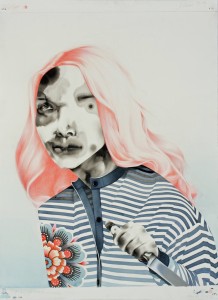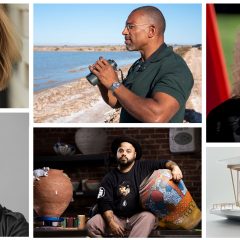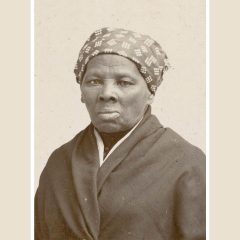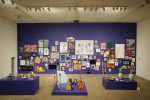Now in its 75th year, the Whitney Biennial is still the big kahuna—the show every American artist wants to be in and every art lover wants to see. This year, the career-boosting show includes no Philadelphia artists. Instead, the curators of this national show sought talent in Chicago, Oregon, Los Angeles and, of course, New York. They rounded up 55 artists and, for the first time, more than half were women. Reflecting our times of war and global recession, the show is a somber parade, sometimes tedious, sometimes achingly beautiful, with a surprising number of photographers and video artists channeling anthropology á la Margaret Mead. It’s a good show—you should see it.

But why should you have to travel all the way to New York to see such a high-cailber show? Here’s an idea. Let’s have a Philadelphia Biennial—a large curated show of regional contemporary art hosted by all of our major art museums, organized by museum curators and with a catalog. Though staging a biennial in Philadelphia would be expensive, Whitney’s 75-year track record proves that it can be a lasting investment.
Rocco Landesman, Chairman of the National Endowment for the Arts (NEA), recently spoke at a panel titled “Can the Arts Revive Our Cities and the Nation’s Economy?” Landesman and the other panelists—practitioners from Austin and New Orleans, an academic from Penn and the head of the National Council for the Traditional Arts—all delivered a resounding “Yes, we can.” (More on that panel in another post. Meanwhile, read Gary Steuer’s post and the Inquirer’s story on the panel.)
The NEA is offering 15 grants of $250,000 to cities (including Philadelphia) to fund bold arts initiatives. Proposing a Philadelphia Biennial is just the kind of move that could win the city that money. PEI (Philadelphia Exhibitions Initiatives, an arm of Pew Trusts) could match that as an initial priming of the money pump locally. But it’s going to take more.
The Whitney Biennial 2010 is sponsored by Deutsche Bank, Tommy Hilfiger, Sothebys, a couple foundations and the Friends Committee of the Whitney Museum. Philadelphia corporations like Comcast, PNC Bank and others could step forward. Local donors and art museum trustees could create a Friends of the Philadelphia Biennial fund.
The exhibit could be at the Institute of Contemporary Art one year; Pennsylvania Academy of the Fine Arts the next; Philadelphia Museum of Art after that. It could be split between the museums and our premier big-box space, the Icebox at Crane Arts Center. There are no rules to break and creative thinking can pull this off.
Biennials, like museum shows in general, are democratic—they are shows for the people. A Philadelphia Biennial would bring the public to contemporary art and educate them about it. In the local art community, people bemoan the lack of educated art consumers in Philadelphia. Buying art is essential to retaining artists here and keeping the arts economy going and growing. Create the Philadelphia Biennial and you will be taking the first step in educating this new group of collectors.
What is needed to make this happen is leadership. Mayor Nutter and art czar Gary Steuer need to get on board and exert political clout. Financial leadership from foundations, the city, universities, corporations and private donors is a necessity.
Who is the audience for the Philadelphia Biennial? It’s the Flower Show attendees—people interested in the city, the arts, beauty and discourse about things that bring joy and meaning to life, that and the thousands of artists, gallerists, collectors, museum professionals and arts lovers in the region.
The Greater Philadelphia Cultural Alliance’s research shows that people in this region spend twice as much on culture as they do on sporting events—and these same people report more satisfaction from those art events than from sporting events. Give the people what satisfies them—a grand, blockbuster contemporary art show to talk about for months with their friends.
If Whitney can do it, so can we. We have the beginnings of a model for this in Philagrafika 2010, the citywide print festival. It’s risky and it’s going to cost money, but the payback could be huge.
Read this story at Philadelphia Weekly.










